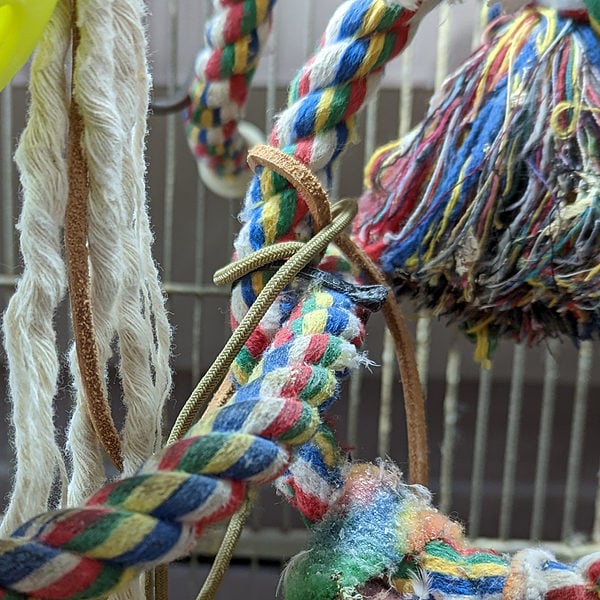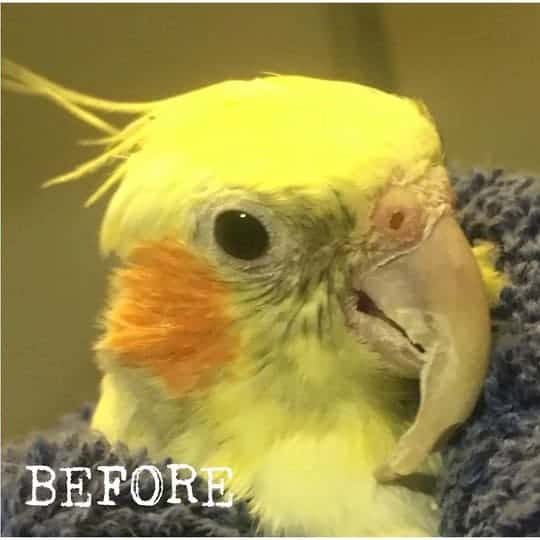
Improve the Relationship with Your Bird in a Snap
Last Updated on by Mitch Rezman
I recently saw an ad on the Internet for bird training treats. What was interesting to me was in recommending bird treats similar to NutriBerries. Don’t get me wrong we love NutriBerries and think it’s a great treat, just not for training.
Before I get ahead of myself when I speak of training when it comes to birds (horses and dogs do well with this) I talk about clicker training.
We have been saying for years that anywhere from 3 to 20 minutes a day spent with your bird in a clicker training session will help to find a very positive relationship between you and said bird.
Clickers can actually help make an aggressive bird more cooperative. Think about it, birds are all about communication, and clicker training is all about one-on-one communication. Just you and your bird.
Here’s a great video done by a veterinarian breaking down the process and showing how an aggressive Senegal parrot stopped biting in two days.
Building trust with your bird through clicker training ~ Video
Clicker training is just that. It uses a small plastic device that clicks when you depress it. A clicker itself isn’t necessary, a tongue noise or snap of the fingers can be just as effective.
Clicker training works because it’s asking your bird to cooperate which will make him or her feel better when making their own choices rather than forcing them fit into your lifestyle. It’s like playing a game with a child and what child doesn’t like game playing?
Clicker training helps bridge the gap between you not understanding bird speaking your bird not understanding human speak and anyone even without experience can be successful at it. Clicker training will be a little less successful if the bird does not have the proper diet, sleep cycle, or a proper caged environment.
Clicker training can work with birds who are flighted or whose wings are clipped. When working with the young bird it’s best to wait until they are off-hand feeding. If you acquire an adult bird is really no reason to wait for the bird to adjust. The sooner you start the better you’ll both be. To that point, the age of the birds should not matter as long as the birds are healthy
Clicker training can be used for everything from tricks to modifying screaming and biting behavior. If you have more than one bird, try working with one bird at a time allowing the other one to watch.
Because birds are so smart with very refined memories skipping a day or two or taking the weekends off isn’t a bad thing. Your bird should pick it up on the next session. By all means, don’t force it. If you’re in a bad mood your bird knows it and can see from your facial expressions or sensitivity in the tone of your voice. Training session should be fun for the two of you
My goal here is not to teach you the art/science of clicker training but to help you help yourself by spending less time than you would drink a cup of coffee in order to gain a lasting positive relationship with your bird.
A single piece of mango is tasty and the bird can finish it rapidly. If you are starting with an aggressive bird, a biter who will always go for your fingers, try placing the single treat (which could also be something like a piece of papaya or coconut) in a stainless steel dish, reducing your finger exposure.
Millet has the attraction to birds the same way McDonald’s French fries has the attraction to humans. You can use scissors to cut a very small portion from the Millet sprig. (or use Millet bits from Higgins) You can place that small portion into the stainless steel dish, or you can use the 10 inch Millet spray (like in the video) using the length of the sprig to keep your hand distanced from a razor-sharp parrot’s beak
Regardless of the treats were tools that you use, clicker training is a no lose proposition for you and your bird.
Written by Mitch Rezman
Approved by Catherine Tobsing
Author Profile
Latest entries
 The Traveling BirdJune 26, 2025Can You Name 5 Parrot Species That Are Living Wild in the USA?
The Traveling BirdJune 26, 2025Can You Name 5 Parrot Species That Are Living Wild in the USA? Bird BehaviorJune 26, 2025How is it Parrots Are Problem Solvers Social Animals and Even Use Tools?
Bird BehaviorJune 26, 2025How is it Parrots Are Problem Solvers Social Animals and Even Use Tools? Bird & Parrot AnatomyJune 25, 2025How a Tiny Chemical Modification Makes Parrots Nature’s Living Paintings
Bird & Parrot AnatomyJune 25, 2025How a Tiny Chemical Modification Makes Parrots Nature’s Living Paintings PigeonsJune 20, 2025How Do Parrots Thrive in Cities Outside Their Native Habitats?
PigeonsJune 20, 2025How Do Parrots Thrive in Cities Outside Their Native Habitats?


